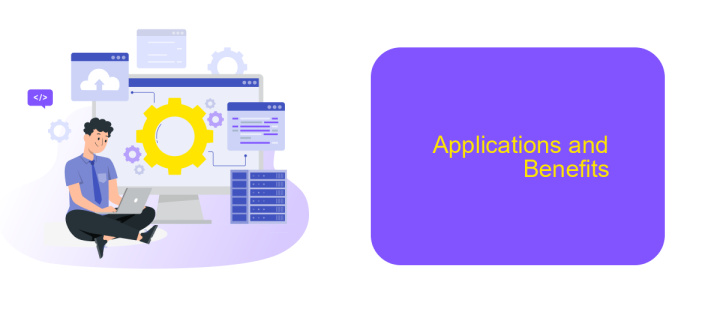Middleware Data Integration
Middleware data integration plays a crucial role in modern IT ecosystems, providing seamless connectivity and data exchange between disparate systems and applications. By acting as a bridge, middleware solutions enable organizations to streamline workflows, enhance data accuracy, and improve overall efficiency. This article explores the key benefits, types, and implementation strategies of middleware data integration, highlighting its importance in today's interconnected digital landscape.
Introduction
Middleware Data Integration is a critical component in modern IT ecosystems, enabling seamless communication and data exchange between disparate systems. As businesses grow, they often adopt various software solutions to meet specific needs, resulting in a complex web of applications that need to work in unison. Middleware serves as the glue that binds these applications together, ensuring they can share data and processes efficiently.
- Streamlines data flow between systems
- Reduces manual data entry and errors
- Enhances system interoperability
- Facilitates real-time data access
- Improves overall operational efficiency
Tools like ApiX-Drive play a pivotal role in simplifying middleware data integration. ApiX-Drive offers a user-friendly interface for configuring integrations between various applications without requiring extensive coding skills. By leveraging such services, businesses can quickly set up automated data transfers, ensuring that their systems remain synchronized and up-to-date, thereby driving better decision-making and operational agility.
Middleware Architecture

Middleware architecture serves as a crucial layer in the data integration process, acting as an intermediary that facilitates seamless communication and data exchange between disparate systems. This architecture typically comprises a set of software components that manage data flow, transformation, and routing, ensuring that data from various sources is accurately and efficiently integrated into target systems. Key components often include message brokers, data transformation engines, and connectors that interface with different databases and applications, providing a unified platform for data management.
One effective approach to middleware data integration is leveraging specialized services like ApiX-Drive. ApiX-Drive offers a comprehensive suite of tools designed to simplify the integration process, enabling users to connect multiple applications without requiring extensive coding knowledge. By using ApiX-Drive, organizations can automate data workflows, synchronize information across platforms, and ensure real-time data availability. This not only enhances operational efficiency but also allows for more agile and scalable integration solutions, making it easier to adapt to evolving business needs and technological advancements.
Data Integration Techniques

Data integration is a crucial process in modern enterprises, ensuring seamless data flow between disparate systems. Various techniques are employed to achieve effective data integration, each with its own advantages and use cases.
- ETL (Extract, Transform, Load): This traditional method involves extracting data from source systems, transforming it into a suitable format, and loading it into a target system or data warehouse.
- API-Based Integration: Utilizing APIs to connect different systems allows real-time data exchange and more flexible integrations. Tools like ApiX-Drive facilitate this by offering ready-to-use connectors and automation capabilities.
- Data Virtualization: This technique enables real-time data access without the need for physical data movement, providing a unified view of data from multiple sources.
- Data Replication: Copying data from one system to another ensures data consistency and availability, often used for backup and disaster recovery.
The choice of data integration technique depends on factors like data volume, real-time requirements, and the complexity of source and target systems. Leveraging services like ApiX-Drive can simplify the integration process, reducing development time and ensuring reliable data flow across platforms.
Applications and Benefits

Middleware data integration plays a crucial role in modern businesses by streamlining the process of connecting disparate systems and applications. This approach enhances data consistency and reliability, allowing organizations to make more informed decisions based on accurate and up-to-date information.
One of the primary benefits of middleware data integration is the reduction of manual data entry and the associated errors. By automating data flows between systems, companies can achieve greater efficiency and reduce operational costs. Additionally, middleware solutions can be scaled to accommodate growing data volumes and evolving business needs.
- Improved data accuracy and consistency
- Enhanced operational efficiency
- Scalability for growing data needs
- Cost reduction through automation
Services like ApiX-Drive offer powerful tools for setting up and managing data integrations. With user-friendly interfaces and robust capabilities, ApiX-Drive simplifies the process of connecting various applications, ensuring seamless data exchange and enabling businesses to focus on their core activities without worrying about data silos or inconsistencies.
- Automate the work of an online store or landing
- Empower through integration
- Don't spend money on programmers and integrators
- Save time by automating routine tasks
Conclusion
In conclusion, Middleware Data Integration plays a crucial role in modern IT ecosystems by enabling seamless data exchange between disparate systems. This integration not only enhances operational efficiency but also ensures data consistency and accuracy across various platforms. The ability to connect different applications and databases through middleware solutions allows businesses to leverage their existing infrastructure while adopting new technologies with minimal disruption.
Services like ApiX-Drive further simplify the integration process by providing user-friendly tools for configuring and managing connections between various applications. With ApiX-Drive, organizations can automate data workflows, reduce manual intervention, and achieve real-time synchronization, which is essential for maintaining competitive advantage. By utilizing such middleware solutions, businesses can focus on their core operations while ensuring that their data-driven strategies are effectively supported.
FAQ
What is Middleware Data Integration?
Why is Middleware Data Integration important for businesses?
How does Middleware Data Integration work?
Can Middleware Data Integration be automated?
What challenges can arise with Middleware Data Integration?
Strive to take your business to the next level, achieve your goals faster and more efficiently? Apix-Drive is your reliable assistant for these tasks. An online service and application connector will help you automate key business processes and get rid of the routine. You and your employees will free up time for important core tasks. Try Apix-Drive features for free to see the effectiveness of the online connector for yourself.


